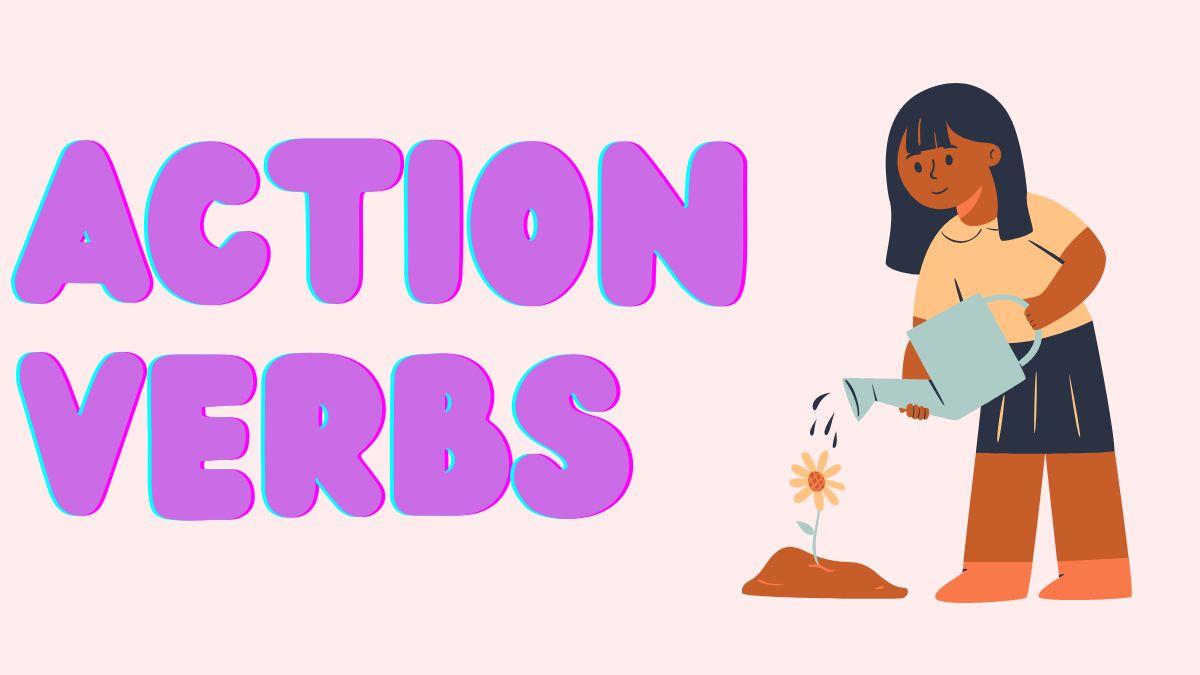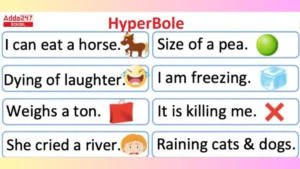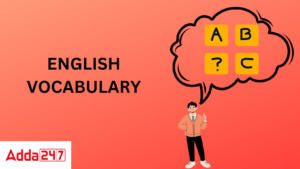Table of Contents
The verbs can take many types in the English language an one such type are action verbs. Action verbs are terms used to illustrate actions, either physical or mental, carried out by the sentence’s subject. They play a crucial role in forming sentences by showing the actions of the subject. Candidates can check all the important details regarding the action verb in this article. To test their progress, we have also included questions on this topic to strengthen your concepts.
Action Verbs
Action verbs are verbs which denote the action carried out by the subject. An action verb is employed to depict the action performed by the subject in a sentence, as implied by its name. Linking verbs cannot be utilized as action verbs. Their sole purpose is to indicate the action in a sentence. An action verb is also known as dynamic verb. Action verbs are different or opposite of the stative verbs that which describe a state of being (e.g., “want,” “believe”).
Definition of Action Verbs
Check the definition of an action verb as described by the famous dictionary of English grammar below.
According to the Merriam-Webster Dictionary, an action verb is defined as “a verb that expresses action. ‘Think’ in ‘Let’s think about the problem’ and ‘drive’ in ‘We often drive past their house’ are both action verbs.”
The sentences formed by the action verb follows a definite pattern in most cases. The sentence pattern in most instances is shown below.
SUBJECT → ACTION VERB → THE REST OF THE SENTENCE
(noun, pronoun, or noun phrase) → (verb) → (adjective, adverb, noun, prepositional phrase, etc.)
Action Verb Examples
Most of the time, action verbs are found immediately after the subject at the start of a sentence. Let’s examine the following instances to understand how they are utilized.
- The little girl ran to her mother the moment she saw her. (The verbs ‘ran’ and ‘saw’ are the action verbs in the sentence. They are simple past forms of ‘run’ and ‘see’)
- Let us take the wounded dog to the veterinary hospital. (The action verb in the sentence is ‘take’ used in its simple present form or the original form)
- My mom reached home at 7:20 p.m. (The root verb ‘reach’ used in the simple past form is the action verb in the sentence)
- I wrote a letter to the bank manager requesting for a bank statement. (The verb ‘wrote’, used in the simple past form, is the action verb in the sentence)
- Shirley is singing the most recent song of A. R. Rahman. (The verb ‘singing’, used in the present continuous form, is the action verb in the sentence)
How to Use Action Verbs?
People should follow certain guidelines of the English grammar while using the action verb. Action verbs may either require a direct object (transitive) or not require a direct object (intransitive). Transitive verbs must have a direct object, like a noun or pronoun, to receive the action. Sentences with a transitive verb become vague or incomplete when they lack a direct object.
For example:
Jack pushed another kid at the schoolyard. – Transitive action verb
Can I borrow this book? – Transitive action verb
On the other hand, intransitive verbs do not need a direct object to receive the action of the verb. Nevertheless, additional information can also follow the verb, such as an adverb.
They complain frequently. – Intransitive action verb
The dog ran. – Intransitive action verb
Certain action verbs have the ability to function as both transitive and intransitive verbs. The examples of these verbs are given hereunder.
He grows tomatoes on his balcony.
My niece is growing quickly.
My neighbor plays drums every morning.
The kids can play outside today.
Candidates should note that using action verbs enhances the vividness of your writing, making them useful for resume writing. Action verbs, such as “responsible for,” “tasked with,” or “experienced in,” are not as attention-grabbing as generic phrases and do not emphasize our abilities and accomplishments. Some examples of these verbs helpful for resume are given below.
- Advised
- Approved
- Authorized
- Chaired
- Coached
- Reorganized
- Represented
- Responded
- Reviewed
- Revitalized
- Addressed
- Arranged
- Assessed
- Launched
- Lectured
- Performed
- Photographed
- Planned
Difference Between Action Verbs and Linking Verbs
Action verbs should be distinguished from linking verbs such as “be,” “become,” and “seem.” Linking verbs join the subject of a sentence to a subject complement, which can be a noun or adjective that describes it.
Linking verbs provide additional information about the subject’s appearance or flavor, rather than indicating an action like action verbs do.
For example, the sentence “The parents seem upset” uses the linking verb “seem” to link the subject (“the parents”) with the adjective (“upset”).
Certain verbs have the ability to function as either linking verbs or action verbs. If you are uncertain, attempt substituting the linking verb with a conjugated form of the verb “be.” If the sentence remains coherent, it is a linking verb. Examples of such verbs are given hereunder.
You look exhausted. – Action Verb
We all took turns looking through the microscope. – Linking Verb
This pasta tastes delicious. – Action Verb
He tasted the soup and said it was too salty. – Linking Verb
Difference Between Action Verbs and Stative Verbs
Action or dynamic verbs are frequently compared with stative verbs. While action verbs show action, stative verbs indicate a state of being or perception (for example, “it tasted,” “he is,” “she heard”). Because of this, they are generally utilized to offer additional details about the subject rather than convey an action performed by the subject.
For instance, the sentence “Tom loves spending time with friends” utilizes a stative verb “loves” to provide insight into Tom’s character.
Nevertheless, certain verbs have the ability to function as dynamic/action or stative verbs based on the context of the sentence. For instance, the word “think” can indicate an individual’s viewpoint (stative verb) or the internal act of contemplating something (action verb). The following example will help you understand this point.\
His manager thinks he is lazy. – Action Verb
They’re thinking about adopting a dog together. – Stative Verb
Examining the verb tenses is one method for distinguishing action verbs from stative verbs. Due to the fact that stative verbs typically represent a constant state, they are unable to be utilized in progressive tenses. In contrast, action verbs are able to be utilized in ongoing tenses. For example:
- I am wanting some food. – Incorrect use of stative verb
- I want some food. – Correct use of stative verb
Another method is to examine the sentence’s meaning and determine if the verb indicates an action performed by someone or conveys feelings or state of being. An action verb is a verb that explains the actions performed by someone. If not, it is most likely a stative verb.
Action Verbs List
Check the list of some of the most commonly used action verb in the following table.
| Call | Clear | Stitch |
| Write | Test | Ring |
| Make | Cook | Read |
| Try | Move | Lift |
| Play | Dance | Skip |
| Travel | Teach | Learn |
| Sing | Speak | Drive |
| Buy | Drink | Chew |
| Jump | Keep | Bring |
| Share | Sit | Stand |
| Run | Walk | Talk |
| Related Articles | |
| Linking Verbs | Regular Verbs |
| Phrasal Verbs | Main Verbs |
| Modal Verbs | Verb Forms |



 Hyperbole- Explanation, Definition, Exam...
Hyperbole- Explanation, Definition, Exam...
 500+ Antonyms Words List for Kids, Downl...
500+ Antonyms Words List for Kids, Downl...
 Vocabulary Words with Meaning and Senten...
Vocabulary Words with Meaning and Senten...









